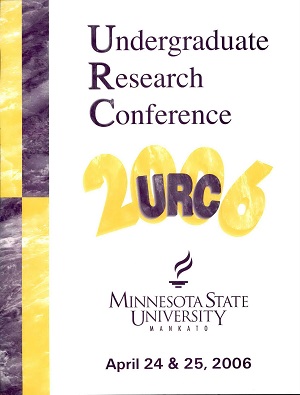How Christians Deal with Times of Transition: Comparing and Contrasting the Fourth Century Basilica with the Modern
Location
CSU 253
Start Date
25-4-2006 8:45 AM
End Date
25-4-2006 10:15 AM
Student's Major
College of Arts and Humanities
Student's College
Arts and Humanities
Mentor's Name
Thomas Hagen
Mentor's Department
College of Arts and Humanities
Mentor's College
Arts and Humanities
Description
Architecture provides a cultural window into peoples' thoughts, actions, and beliefs. This is especially true of religious architecture. The modem phenomenon of the "megachurch" has resulted from a period of transition for Christians which is strikingly similar to the situation which faced Christians in the 4th century A.D. How the early Christians dealt with their building needs and how modem Christians are dealing with theirs provides an insight into how both the practice of Christianity and the culture in which it is practiced has changed. Research showed that the situations in which these stmctures were built had much in common: a growing political acceptance, an explosion of converts to the church, and a desire to move from non-religious buildings (for the early Christians this was homes, for modem Christians it was schools, homes, and theaters) to buildings set aside primarily for religion. But whereas the basilica became a giant icon in itself the megachurch today tends to be "desacralized." That is, religious symbols and icons are kept to a bare minimum. The influence of politics, fellowship, missions, technology, theology, iconography, clergy/laity relations, and pop culture on the architecture of the megachurch show why and how Christians have dealt with these similar situations in such different ways.
How Christians Deal with Times of Transition: Comparing and Contrasting the Fourth Century Basilica with the Modern
CSU 253
Architecture provides a cultural window into peoples' thoughts, actions, and beliefs. This is especially true of religious architecture. The modem phenomenon of the "megachurch" has resulted from a period of transition for Christians which is strikingly similar to the situation which faced Christians in the 4th century A.D. How the early Christians dealt with their building needs and how modem Christians are dealing with theirs provides an insight into how both the practice of Christianity and the culture in which it is practiced has changed. Research showed that the situations in which these stmctures were built had much in common: a growing political acceptance, an explosion of converts to the church, and a desire to move from non-religious buildings (for the early Christians this was homes, for modem Christians it was schools, homes, and theaters) to buildings set aside primarily for religion. But whereas the basilica became a giant icon in itself the megachurch today tends to be "desacralized." That is, religious symbols and icons are kept to a bare minimum. The influence of politics, fellowship, missions, technology, theology, iconography, clergy/laity relations, and pop culture on the architecture of the megachurch show why and how Christians have dealt with these similar situations in such different ways.
Recommended Citation
Dauer, Tysen. "How Christians Deal with Times of Transition: Comparing and Contrasting the Fourth Century Basilica with the Modern." Undergraduate Research Symposium, Mankato, MN, April 25, 2006.
https://cornerstone.lib.mnsu.edu/urs/2006/oral-session-J/2



